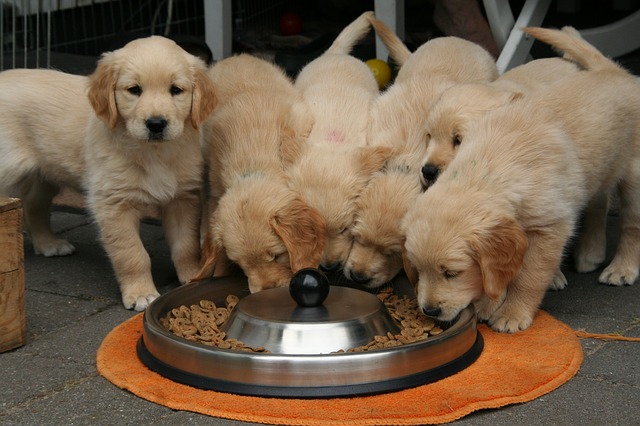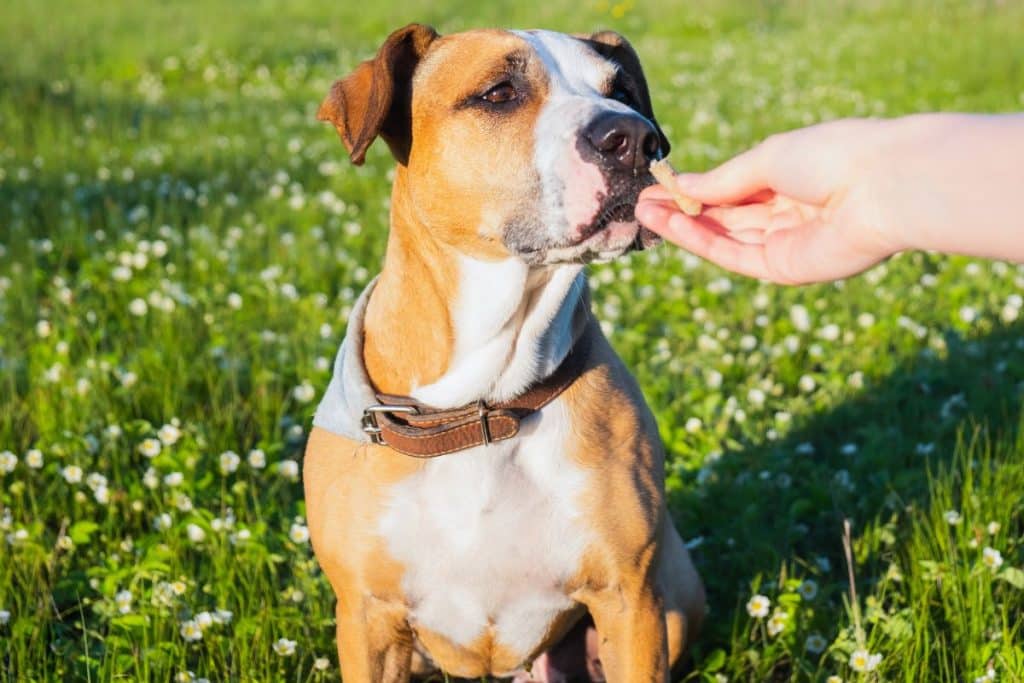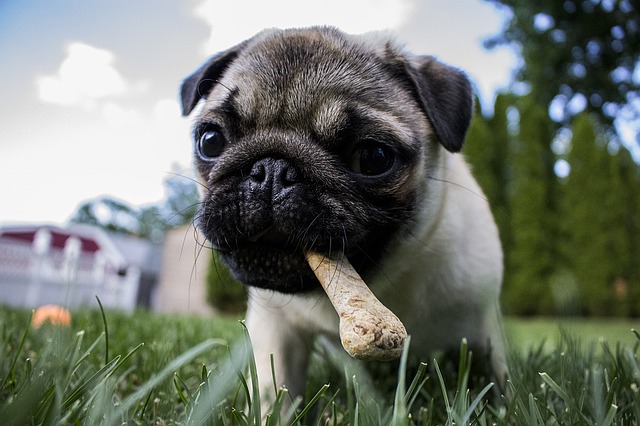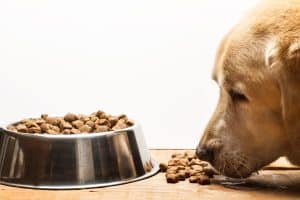Dogs are known for their voracious appetites. No matter how much you feed them, they never seem done. This can be a frustrating and concerning issue for first-time pet owners.
In this article, I’ll explore the science behind a dog’s appetite, factors that can influence their hunger levels, and ways to ensure your dog gets the appropriate amount of food for their needs.
If you’re worried, don’t be. It’s a very common concern among dog owners. And to answer your question:
Dogs, like humans, can feel full and satisfied after a meal. However, unlike us, they don’t have the cognitive ability to understand portion control and may overeat. This leads to obesity and other health problems if left unchecked by pet owners.
Some dog breeds are more prone to overeating than others, so it is important to consult a veterinarian to develop a feeding plan that meets your dog’s needs.
Your Dog’s Not Full Because of Evolution.
Additionally, look at this from an evolutionary perspective. Dogs haven’t always been domesticated and are descendants of the wolf. Despite that being a long time ago (thousands of years), it’s still not beyond the realms of possibility that they have retained much of their “feast or famine” mentality towards food.
Wild wolves and dogs didn’t know when their next meal would come, so when food was presented to them, they would feast on it. The phrase “hungry like a wolf” comes to mind here. Indeed, feast or famine is a common sight in most wild animal behaviour.
Your dog may not be hungry and simply loading up on food in preparation for a famine that may never come. Dogs are clever but need to be more clever to know that their owners will always be there to feed them.
Your Dog’s Not Full Because of Biology.
Unlike humans, dogs have a shorter digestive tract, meaning food passes through their system faster. This means they need to eat more frequently to maintain their energy levels.
On top of that, dogs have a higher metabolic rate, meaning they burn more calories at rest than humans. This also means that they need to eat more to maintain their weight.
Hunger hormones play a role in regulating your dog’s appetite. Ghrelin is a hormone that stimulates hunger, while leptin is a hormone that signals when the body is full. Research has shown that dogs spayed or neutered have altered levels of these hormones.

Breed, age, and size can also influence their appetite. Larger breeds tend to have a slower metabolism and may require fewer calories, while smaller breeds may have a faster metabolism and require more calories.
Puppies and young dogs also require more calories than adult dogs, which are still growing and developing. As dog’s age, their metabolism slows down, and they may require fewer calories to maintain their weight.
Read More: Why is my dog overeating? How to treat the issue?
How to feed your dog properly and maintain calories?
As a dog owner, it’s pertinent for you to understand the nutritional needs of your furry friend.
A balanced diet for dogs should include a variety of proteins, carbohydrates, fats, vitamins, and minerals. These nutrients are essential for maintaining a healthy weight, promoting growth and development, and preventing various health issues.
The dietary requirements may vary based on breed, age, size, and activity level. Consulting a veterinarian or a canine nutritionist can help you determine the appropriate diet for your dog.
Several factors can affect your dog’s calorie requirements, such as age, weight, activity level, and overall health.
Puppies, for instance, need more calories than adult dogs to support their growth and development. Similarly, seniors may require fewer calories than younger dogs because they tend to be less active.
How to calculate your dog’s calorie requirements?
To determine your dog’s calorie requirements, consider their daily activity level and ideal weight. For calculation, you use the Resting Energy Requirement (RER) formula, which considers your dog’s weight and activity level.
Calories (required per day) = 70 x (Dog’s body weight in kgs)3/4
For instance, a 10kg (22lb) healthy adult dog will need approximately 400 calories daily. Once you have calculated your dog’s RER, you can adjust its calorie intake based on its activity level.
It is important to note that calorie requirements are just a starting point, and you may need to adjust your dog’s diet based on its individual needs. For example, if your dog is gaining weight despite being fed according to their calorie requirements, you may need to reduce its portion sizes or switch to a lower-calorie diet.
In addition to providing a balanced diet, feeding your dog regularly throughout the day is also important. Feeding them two to three small meals daily can help prevent overeating and promote healthy digestion. Avoid leaving food out all day, as it can encourage your dog to graze and overeat.
By providing your dog with a well-balanced diet and feeding them according to their calorie requirements, you can help control their appetite and prevent them from becoming overweight or obese.

How do I know if I overfeed my dog?
Obesity is one of the dogs’ most common health problems and is often caused by overeating. Some common symptoms of obesity in dogs include excessive weight gain, energy loss, difficulty breathing, lethargy, excessive thirst, frequent urination, diarrhoea and joint pain.
One of the easiest ways to determine if you’re overfeeding your doggo is to assess their body condition.
Place your hands on their ribcage and feel for their ribs. You should be able to feel their ribs without pressing too hard. If you cannot feel their ribs or must press hard to feel them, your dog may be overweight or obese.
Important Note: Lack of symptoms mustn’t supplement a timely visit to your vet for screening and regular check-ups.
Associated Health Risks: Overeating and obesity can lead to various health problems in dogs, including diabetes, cardiovascular diseases, respiratory problems, and even cancer.
Tips for Treating Overeating in Dogs:
1. Set a feeding schedule.
2. Use portion control.
3. Provide healthy snacks.
4. Increase exercise.
5. Consult your veterinarian.
Read More: A Beginner’s Guide to Best Dog Treats UK
Frequently Asked Questions (FAQs)
1. What happens if a dog is overfed?
Overfeeding a dog can lead to several health problems, including obesity. It can further increase the risk of various health problems, such as diabetes, heart disease, respiratory problems, joint problems, and even cancer.
An overfed dog can also experience gastrointestinal problems such as vomiting, diarrhoea, and constipation. Additionally, it can cause your dog to become less active, as it may carry extra weight.
2. Can certain breeds be more prone to overeating than others?
Some breeds, such as Labrador Retrievers, Beagles, and Cocker Spaniels, are known to be more food-driven than others. However, any breed can develop overeating habits if they are not provided with a healthy diet and exercise routine.
3. Can I free-feed my dog?
Free feeding is not recommended. Leaving food out all day for your dog to eat whenever they want can lead to overeating and obesity. Establish a mealtime routine and feed them specific portions according to their calorie needs.
4. What are some healthy snack options for dogs?
Some healthy dog snack options include carrots, green beans, and small chicken or turkey pieces. It’s important to avoid giving your dog high-calorie treats or human food that can harm their health.
5. What should I do if I suspect my dog has a medical condition causing their overeating?
If you suspect that your dog has a medical condition, such as a hormonal imbalance or a digestive disorder, it’s important to consult with your veterinarian. They can perform tests to determine the underlying cause of your dog’s overeating and recommend appropriate treatment options.
6. How much exercise does my dog need to control their appetite?
The amount of exercise your dog needs depends on their breed, age, and size. Generally, dogs should get at least 30 minutes of exercise daily, but some breeds may require more. Consult your veterinarian to determine the appropriate amount of exercise for your dog.



